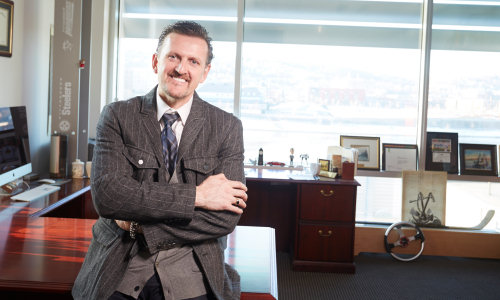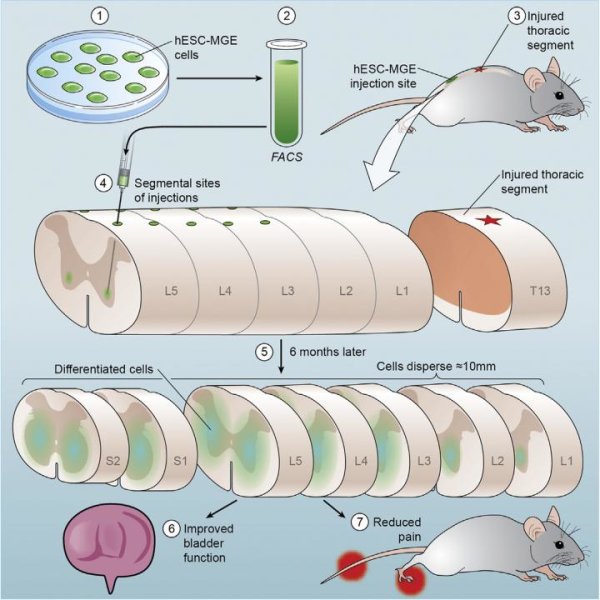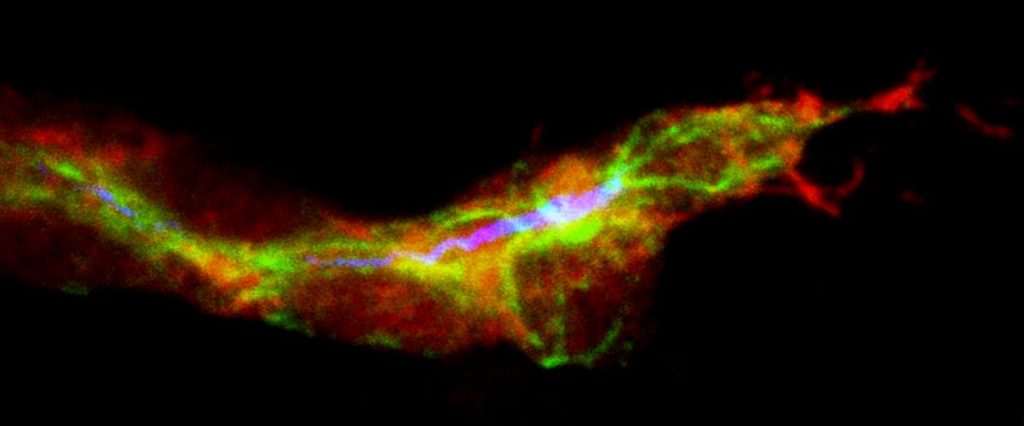Stem cells derived from human muscle tissue were able to repair nerve damage and restore function in an animal model of sciatic nerve injury, according to researchers at the University of Pittsburgh School of Medicine.
Johnny Huard, PhD
The findings, published online today in the Journal of Clinical Investigation, suggest that cell therapy of certain nerve diseases, such as multiple sclerosis, might one day be feasible.
To date, treatments for damage to peripheral nerves, which are the nerves outside the brain and spinal cord, have not been very successful, often leaving patients with impaired muscle control and sensation, pain and decreased function, said senior author Johnny Huard, Ph.D., professor of orthopaedic surgery, and Henry J. Mankin Chair in Orthopaedic Surgery Research, Pitt School of Medicine, and deputy director for cellular therapy, McGowan Institute for Regenerative Medicine.
“This study indicates that placing adult, human muscle-derived stem cells at the site of peripheral nerve injury can help heal the lesion,” Dr. Huard said. “The stem cells were able to make non-neuronal support cells to promote regeneration of the damaged nerve fiber.”
The researchers, led by Dr. Huard and Mitra Lavasani, Ph.D., first author and assistant professor of orthopaedic surgery, Pitt School of Medicine, cultured human muscle-derived stem/progenitor cells in a growth medium suitable for nerve cells. They found that, with prompting from specific nerve-growth factors, the stem cells could differentiate into neurons and glial support cells, including Schwann cells that form the myelin sheath around the axons of neurons to improve conduction of nerve impulses.
In mouse studies, the researchers injected human muscle-derived stem/progenitor cells into a quarter-inch defect they surgically created in the right sciatic nerve, which controls right leg movement. Six weeks later, the nerve had fully regenerated in stem-cell treated mice, while the untreated group had limited nerve regrowth and functionality. Twelve weeks later, treated mice were able to keep their treated and untreated legs balanced at the same level while being held vertically by their tails. When the treated mice ran through a special maze, analyses of their paw prints showed eventual restoration of gait. Treated and untreated mice experienced muscle atrophy, or loss, after nerve injury, but only the stem cell-treated animals had regained normal muscle mass by 72 weeks post-surgery.
“Even 12 weeks after the injury, the regenerated sciatic nerve looked and behaved like a normal nerve,” Dr. Lavasani said. “This approach has great potential for not only acute nerve injury, but also conditions of chronic damage, such as diabetic neuropathy and multiple sclerosis.”
Drs. Huard and Lavasani and the team are now trying to understand how the human muscle-derived stem/progenitor cells triggered injury repair, as well as developing delivery systems, such as gels, that could hold the cells in place at larger injury sites.
Story Source:
The above story is based on materials provided by The University of Pittsburgh Schools of the Health Sciences.





